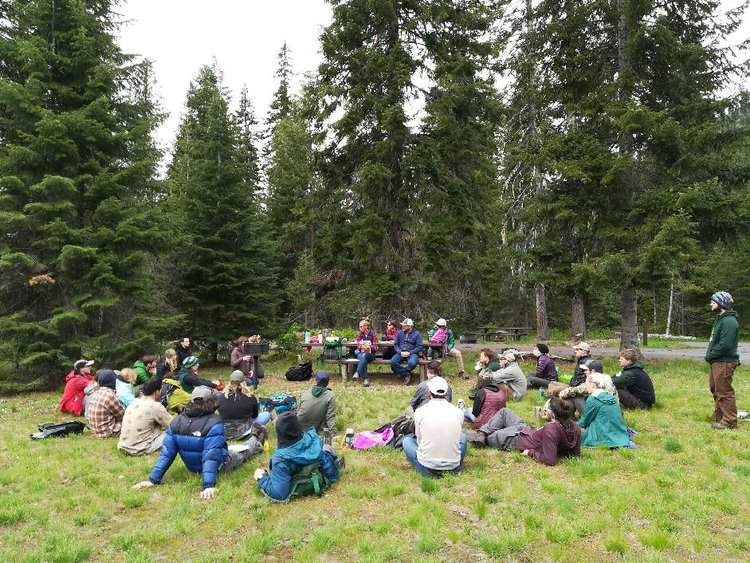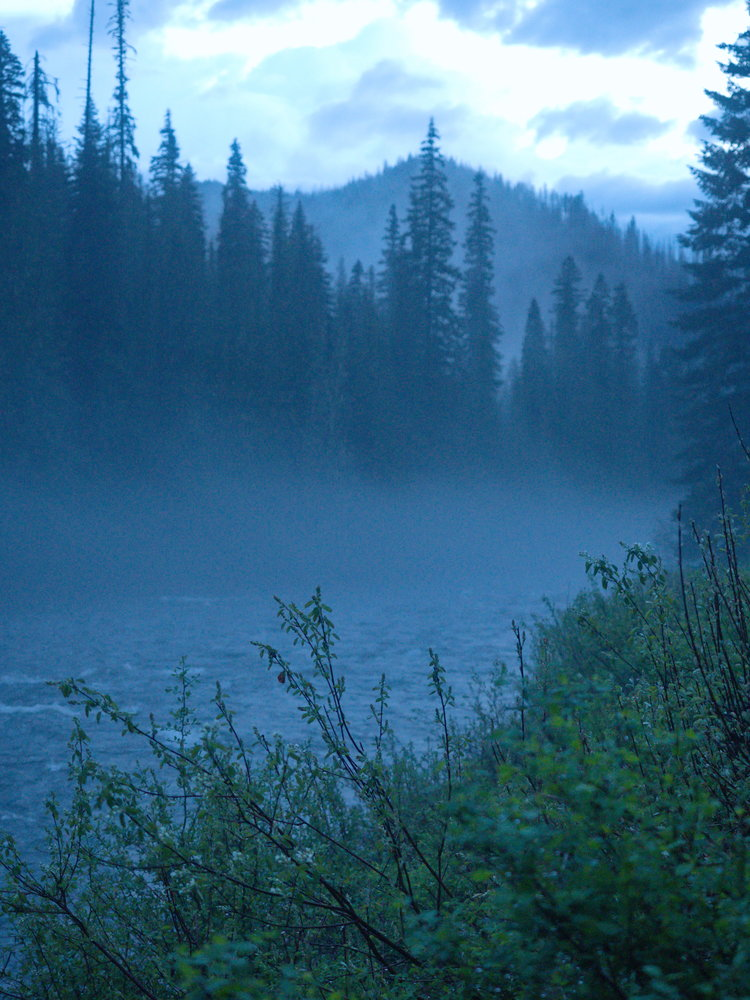 Trainees and instructors discussing Visitor Use/Campsite Monitoring during the Northern Rockies Wilderness Skills Institute 📷Verena Gruber
Trainees and instructors discussing Visitor Use/Campsite Monitoring during the Northern Rockies Wilderness Skills Institute 📷Verena Gruber
Henry Vaughan – Wilderness Ranger Intern
The College of Idaho
Orientation/Training
May 13 – May 27
Nez Perce-Clearwater National Forest
Our first two weeks as Wilderness Ranger Interns has had us housed and training at Powell Ranger Station in the Nez Perce-Clearwater National Forest. Each day, we dip our toes, feet, ankles, knees, bit by bit into wilderness until we are totally submerged: acclimated as much as possible for our fast approaching hitches. We went from staying in beds and bunkhouses during the first week—where we could avoid the worst weather at night by turning up the heaters in our rooms and closing the blinds—to sleeping in our own tents and bags during the second. Before long, we’ll be spending our nights in the wilderness with the only comforts available to us being those which we can carry in on our backs.
We’re developing important skills for working in the wilderness this summer: becoming familiar with our primitive tools, testing out our gear, learning how to navigate in a land without Google Maps; but I’m also recognizing an important new way to perceive nature. Around Powell (particularly outside of the bunkhouses), nature gets up in our face. Deer wander daily between the buildings. One intern encountered a wolf on an early morning trail run. Oyster and morel mushrooms regularly provide a free dinner to those with watchful eyes. These natural displays: such abundances of vitality, fecundity, and productivity from the trees to the insects to the uninhibited Lochsa River flowing right by our tents show a land community with greater agency—where it is difficult to keep humanity and civilization at the forefront of the mind. Closer to wilderness, nature has more room to breathe and speak and (aided greatly by a lack of cell phone service) we are forced to become a listener. And, though we have little say in it, I have yet to meet anyone at the ranger station who isn’t made happier by that prospect.
The closest wilderness area to us (the Selway-Bitterroot) is a hundred feet away—right across the river. In between the banks of the Lochsa, as a sort of gateway between a developed Powell and an undeveloped wilderness, is a small island where the Lewis and Clark party is said to have camped as they made their way over the Bitterroot Mountains. On the far bank is the beginning of a land which can make a visitor feel as if they are stepping back even further in time to before the first American presences. The wilderness areas, where signs of civilization are intentionally minimized, are spaces where nature is most free to speak and where humanity, when present, is most likely to hear a clear and individually unique message. I, for one, am excited to see what this particular wilderness has to share with me.
